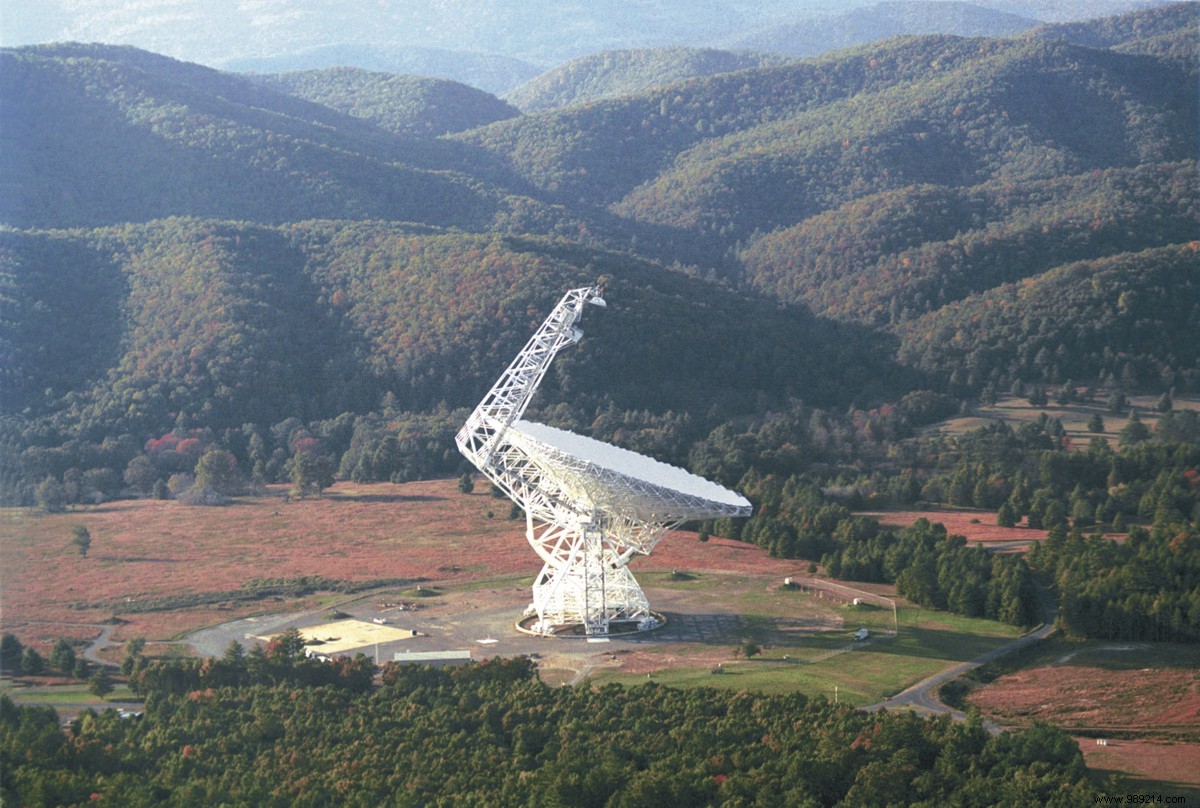A few days ago, a group of researchers submitted a paper to the National Academy of Sciences, arguing for the creation of a SETI radio telescope on the face hidden from the moon. But for what, exactly?
The SETI (Search for Extra-Terrestrial Intelligence ) brings together researchers aiming to detect the presence of advanced extraterrestrial civilizations in the Universe . To do this, they essentially rely on the instrumentation available on the ground, and have done so for several decades. The problem is that our planet has become very "noisy" in the part of the radio spectrum observed by SETI. As such, it threatens to drown out any signal sent by an intelligent civilization. So the idea would be to be able to "listen" to the sky from a much "quieter" environment:the Moon.
Not only would a lunar radio telescope in fact not have to deal with our radio interference , but it could also greatly increase our chances of hearing extraterrestrial signals by allowing the capture of parts of the radio spectrum naturally blocked by the Earth's atmosphere .
The idea of relying on the Moon for radio astronomy is obviously not new. On the other hand, the researchers argue that the technological advances made in recent decades could soon allow the installation of such an observatory.
“Transportation infrastructure to get to the Moon is now much cheaper” , justifies Eric Michaud, of the SETI Berkeley Research Center and first author of the article. “Maybe not today, but I think it will become more and more achievable over time” .

This new document offers two solutions. The first aims to place a radio telescope on the surface accompanied by an orbiter. Concretely, while the first "listens" to the sky and records data on the other side of the Moon, the second takes care of relaying them to Earth.
The problem with such facilities is that they could only study the sky for brief periods . Moreover, if the telescope would be effectively protected from human interference, this would not always be the case for its orbiter, in orbit above the lunar surface.
The second approach would be to turn a lunar crater into a radio telescope. This idea was already considered in the late 1970s by researchers at the Stanford Research Institute. In the end, they concluded that such a facility would be too expensive compared to SETI telescopes that could be built on Earth. In addition, it was estimated at the time that a human settlement would require to build and operate these radio antennas .
Nevertheless, forty years later, astronomer Eric Michaud thinks that building a satellite dish in a lunar crater could finally be quite cheap. One of the main drivers of this cost reduction is the advent of commercial launch providers such as SpaceX and Rocket Lab. Nowadays, robotic systems have also improved sufficiently so that it is possible to take humans out of the equation.

Note that this approach is also of interest to NASA. Last April, the US agency awarded new grants under its Innovative Advanced Concepts (NIAC) program. And one of them aims to install a radio telescope one kilometer in diameter inside a lunar crater. The idea would be to use rovers to deploy a metal mesh in a crater and suspend a receiver above the antenna.
Obviously, nothing says that this project will materialize one day. Nevertheless, solving the technical problems associated with building such a radio receiver is an important first step .
Indeed, there will be challenges. As a reminder, lunar nights last about fourteen Earth days. Also, an observatory should find a way to get power that doesn't rely on solar panels . And the energy needs of an observatory of this size would be substantial .
NASA has well developed small nuclear reactors capable of providing enough power to maintain a functioning lunar base. We could therefore imagine the deployment of similar means for a lunar radio telescope. On the other hand, until now, none of these reactors has been tested in space .
So will we ever see a SETI observatory on or around the moon? Researchers are sure. “As access to space becomes cheaper and more democratized, astronomy will move there and I think a lot of that will be from the lunar surface “, indeed notes Andrew Siemion, director of the Berkeley SETI Research Center. After decades of fruitless searching, perhaps we will then have our "first contact"?